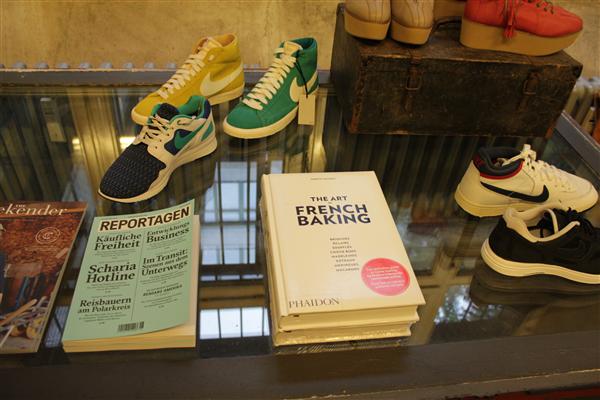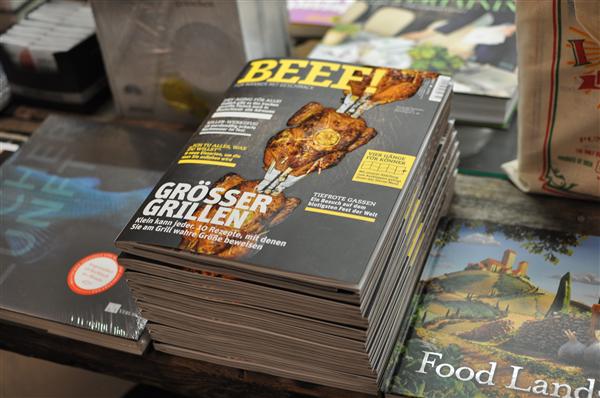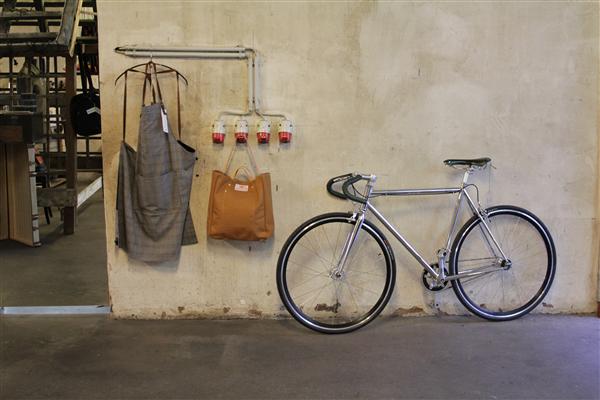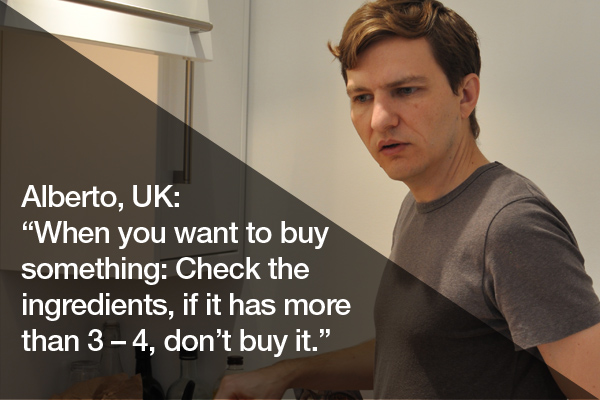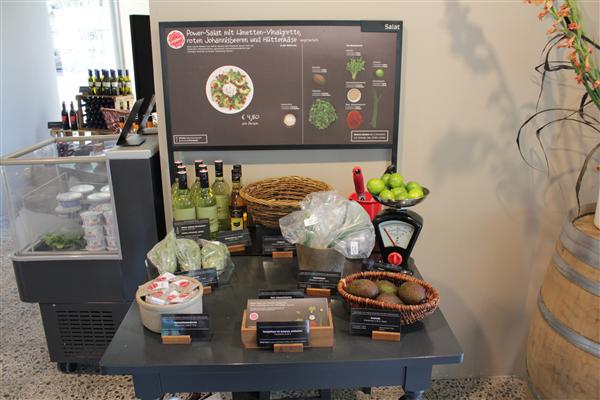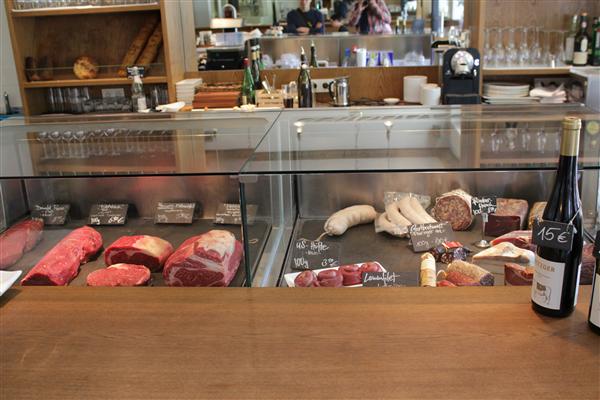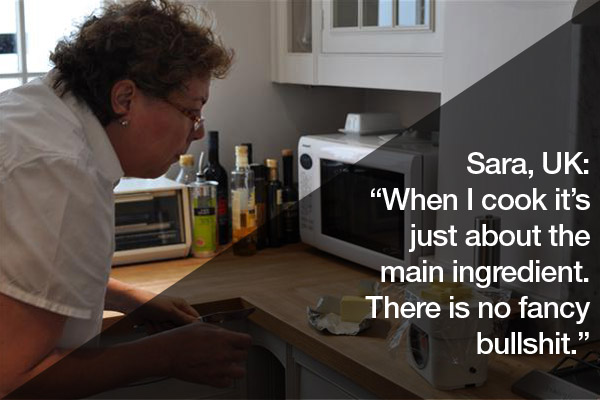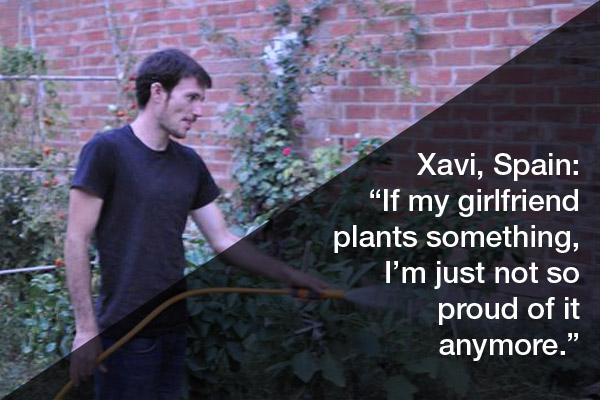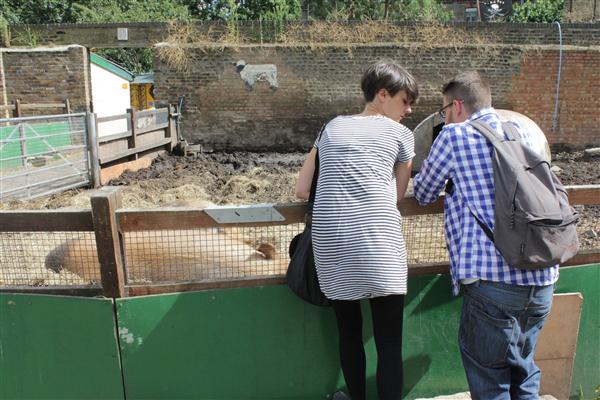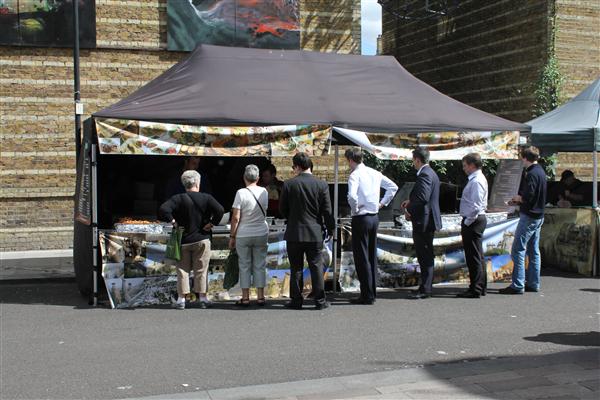You are what others see you eat. Personal diet, secret restaurant or grandma’s cookie recipe: food culture is the best label for self-representation. Bikes, phones, clothes all get old, but food leaves enough room for constant reinterpretation. This doesn’t come from scratch, but is nurtured through media transforming cooks into celebrities and food into cult. Food is the new status symbol and it's replacing the old ones and is changing the consumers' mindset.
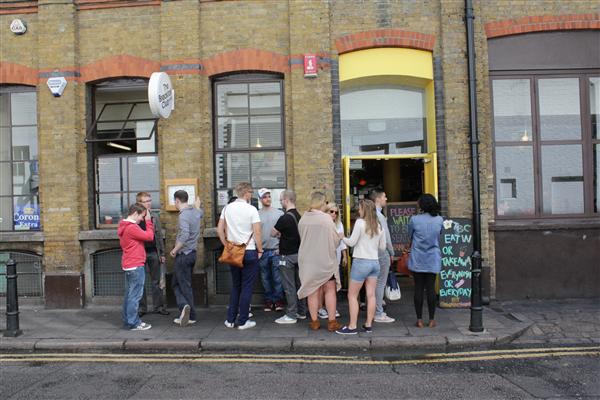
In front of this trendy little café, being seen with the crowd in the queue is just as important as the quality of the pancakes.
Technorati lists
17.000 blogs
about food vs.
10.000 about
fashion.
7 out of
20 of Amazon
UK's 2011
bestsellers are
books about
cooking and
baking.
Today’s supermarkets and grocery-stores are like Disneyland. Whether local, traditional, regional, seasonal, artisan, organic, home-made or authentic, our food conveys a message of quality. And it is always happy. The meat comes from happy cows grown by kind smiling farmers cared for in beautiful sunny nature resorts.
Regardless of where you are, the food stories are identical and keep repeating as marketers and producers are stuck in a loop. Basically, it feels like selling food to people who care more about the story than taste or nutrition.
This creates successful rupture between the food and its origin, which we chose to buy into, as most of us do not want to know the truth about our food any more. Our food is full of self-deception.
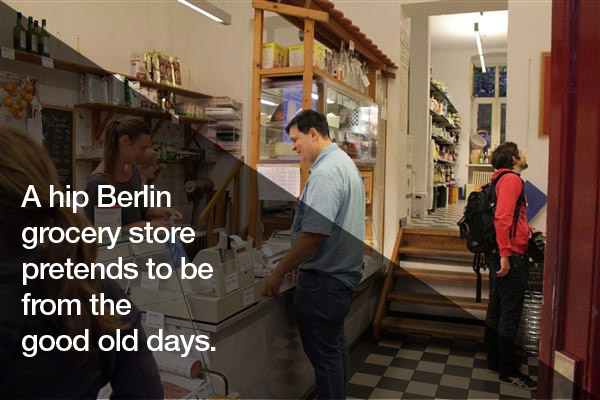
Where is the honesty
in our food?
“What I miss to hear is:
We cook with real fat –
and we love it!”
Gwen, Germany:
“I buy organic, not because of the taste, but because the cows are happier.”
Is your food getting boring?
Have a dumpster-doughnut!
In almost three weeks of field research, visiting eleven households across three countries, one of the most honest meals we were offered was by two dumpster-divers in London. They have been living for years at the end of the food chain without pretending or sugar-coating anything about their meals. Excuses are unnecessary as they are fully honest of where the food on the table in front of us is from:
“Would you like to try a doughnut? We fished them out of a bin yesterday…they are still good. Try them!” Pepe, UK.
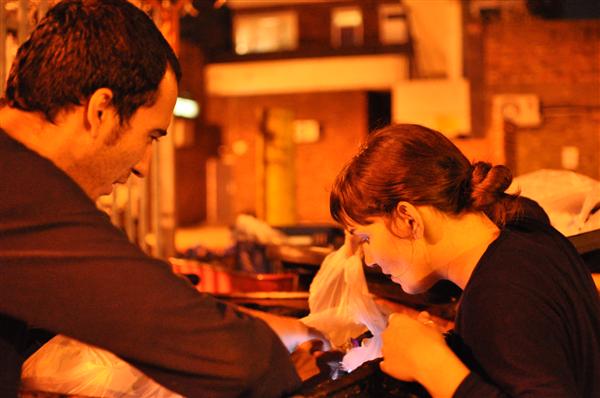
Skipping for today’s dinner outside a London city-supermarket offers more options that one might think: “Wow, I think I see potatoes…”
Throughout our busy day we try to do our best in terms of food. But most of us have gotten lazy through technology and convenience services. As recession cooking spurs the trend to get us back behind that stove, we are looking for support and reassurance of our cooking practices. Even when we want to cook ourselves, we are spoiled: ‘lazy foods’, quality convenience, delivery services and recipe-based shopping make the transition easier.
As organizing what to eat seems complicated enough, we look for simple, easy-to-read signs of quality when shopping or cooking. Most of us create our own ‘food rules’ to find solutions for our daily food. These interpretations set a big impact on tomorrows’ food shopping.
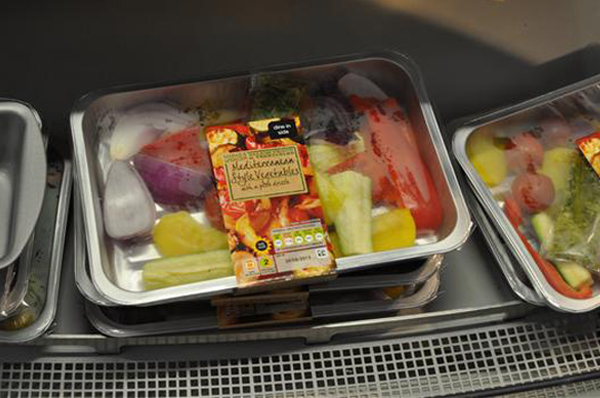
The UK demonstrates retail simplicity-cooking at it’s best: selected, cleaned, pealed and sliced veggies.
Natalia, UK:
“We don’t really
freeze stuff...
there is no point.
We decide every
day what to eat
and buy it
fresh. ”
1 out of six
British women
struggle to cook
basic dishes.
As most of us have lost the skills to build a boat or skin a sheep, the kitchen represents the last refuge for craftsmanship. Anyone is welcome to try the tricks of the old trade and look good by wearing that trendy apron.
Cooking and baking are the last crafts we can master. They offer control and social gratification – something that might lack in other areas of our stressed everyday. Connecting to traditional values, the journey is the reward. Having time for DIY today is a romanticized luxury. That’s what makes baking sexy (again).
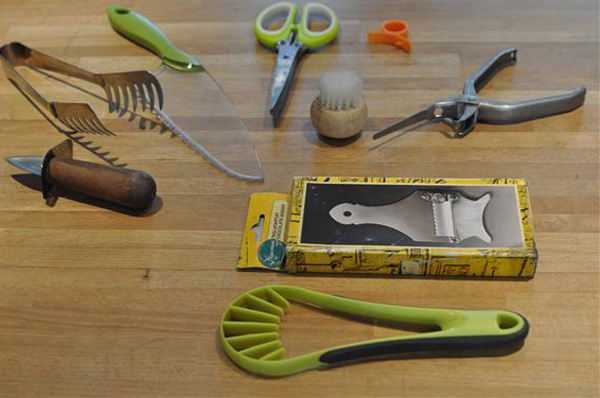
A truly well-equipped household in London. Can you guess what all these tools are for?
79% of women find
cooking as a hobby
attractive in men.
“I even make my own vinegar, it makes the most amazing salad-dressing.”
Sara, UK.
5. Food can be transparent. Are you?
Food is moving on. From organic, to regional, to seasonal and possibly to transparent. Restaurateurs and experts say it’s the next big thing.
Transparency means truth about our food, with less romanticism and more frankness. Look at your fridge – it doesn’t lie. Do you really want to know what’s in that salami? How that chicken was raised?
Embracing transparency means questioning the food chain. Perhaps we are not yet ready for a true food revolution, but need smaller steps. We enjoy spending time for food education, connecting to crafty production at a Sunday stroll through that urban farm or visiting bread-making classes.
Perhaps getting rid of the ‘out of sight, out of mind’ mentality about our food and waste is the actual next big thing.
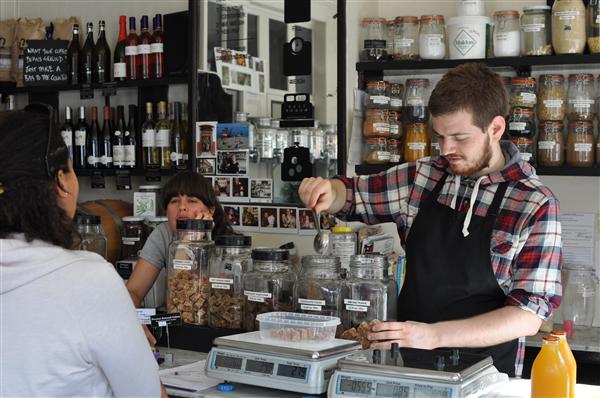
This London store has successfully trained its customers into sustainable behavior, as they all bring their own packaging to do their shopping.
“Organic food is
marketing!"
Toni, Lujuria Vegana,
Spain
First, let's look at the basics. Simplified, every choice we make for a meal is a weighing of three criteria: Identity, convenience and well-being. With them in mind we find our daily answer to the question “Should I have a burger or cook a veggie stew tonight?”
Today, this decision is made almost exclusively between two aspects of the food process: shopping and cooking. Here lie all the cumulated efforts of food marketers. The other half of the food chain remains in the dark: The origin of food in the beginning and the disposal of waste at the end.
Embracing the whole food process can impact the choices we make for our daily meals. It also offers opportunity for producers to create long-term value for food beyond marketing. From ‘nose to tail’ as well as ‘production to waste’

To challenge tomorrow’s food behavior we must close the food gap.
The question is whether we want to.
